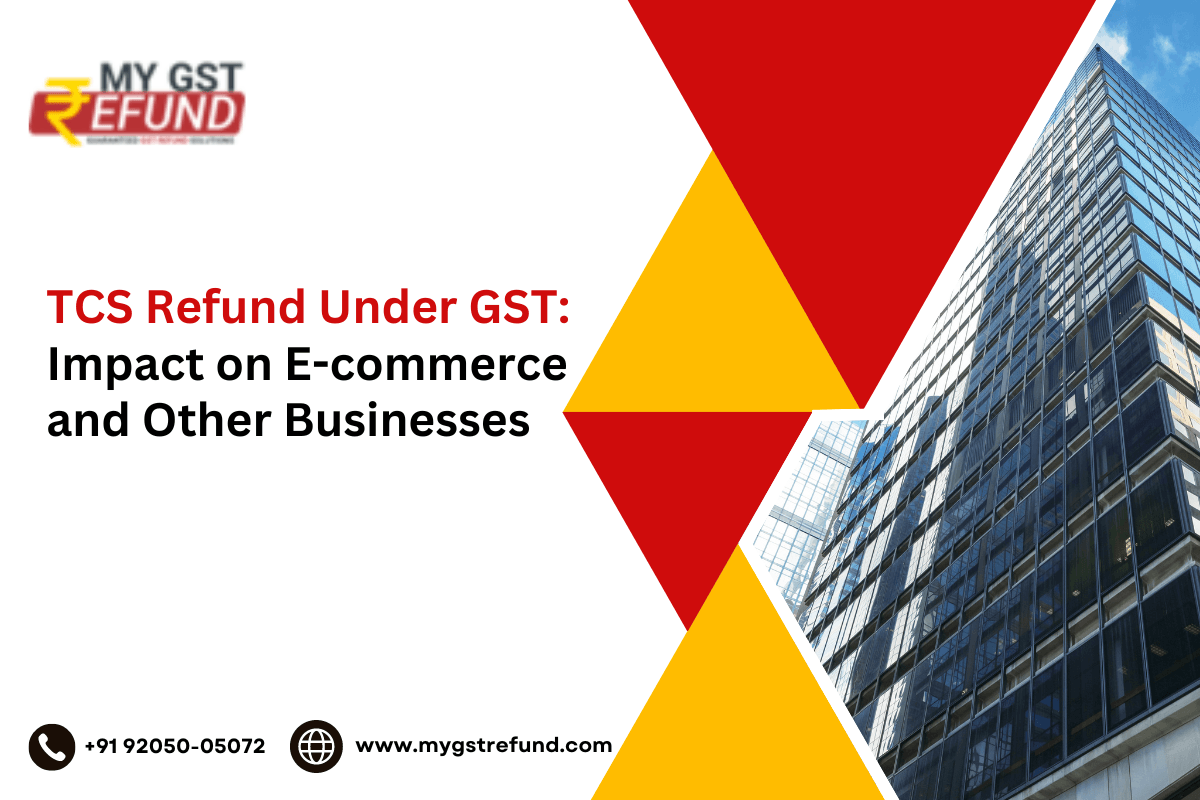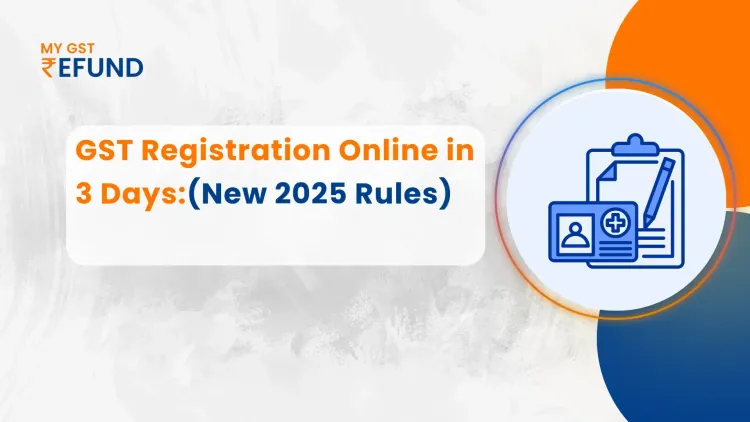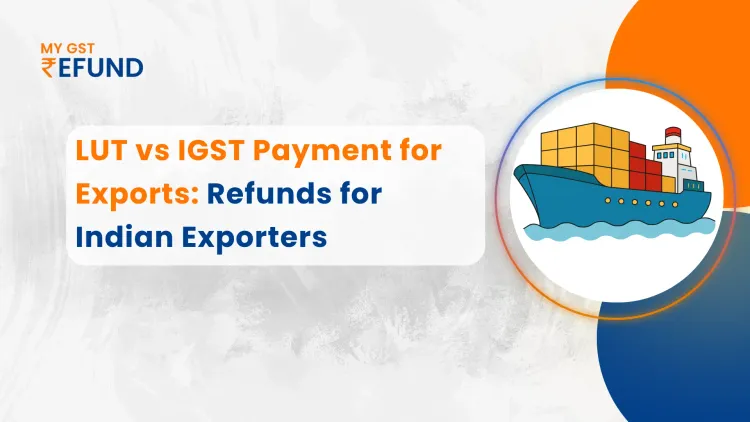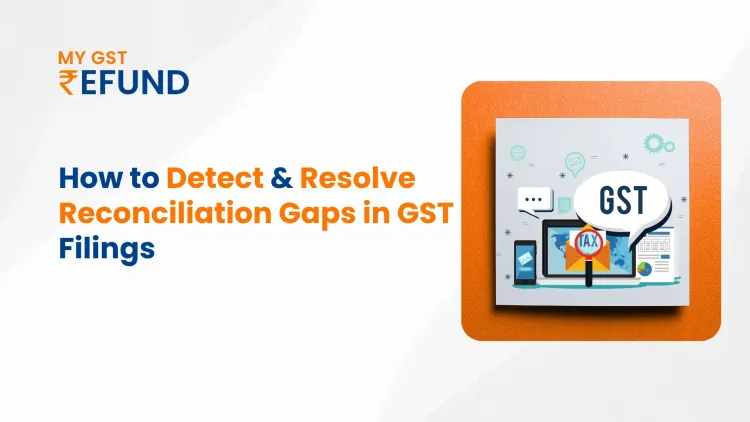TCS Refund Under GST: Impact on E-commerce and Other Businesses
Published on: Fri Jan 19 2024
Bio (Reveal/Hide)

What is TCS under GST?
TCS under GST, or Tax Collected at Source, is a mechanism where a buyer deducts a specific percentage of tax at the source of payment made to a seller. This collected tax is then deposited with the government on the seller's behalf. In simpler terms, imagine someone paying you for a service, but instead of giving you the full amount, they withhold a portion as tax and send it directly to the government.
Who is eligible for a TCS refund?
According to the latest data, over 10 lakh registered taxpayers are eligible for TCS refund under GST. However, not everyone qualifies. To claim a refund, the seller must:
Be registered under GST.
Have filed the necessary returns (GSTR-1 and GSTR-3B).
Have excess TCS credited to their electronic cash ledger.
Have not utilized the TCS amount for any other tax liability.
What is the GST TCS rate?
The GST TCS rate depends on two main factors: the type of transaction and the seller's turnover in the preceding financial year. Here's a breakdown:
E-commerce:
1% (0.5% CGST + 0.5% SGST) on the gross consideration value for suppliers with a turnover exceeding ₹50 lakh in the previous financial year.
This applies to any sale of goods or services through an e-commerce platform (Flipkart, Amazon, etc.) where the platform acts as the intermediary between the buyer and the seller.
Other specified supplies:
5% (2.5% CGST + 2.5% SGST) on the gross payment value for specific transactions listed in the GST law. Some examples include:
Government contracts with suppliers exceeding ₹25 lakh
Purchase of goods exceeding ₹50 lakh (except specified exempted goods)
Payment for transportation of goods by road exceeding ₹50 lakh
Noteworthy points
Sellers with a turnover below ₹50 lakh in the previous financial year are exempt from TCS liability on e-commerce transactions.
The TCS rate for both e-commerce and other transactions is currently set at 1% and 5%, respectively, but it can be revised by the government through notifications.
It's important to remember that the TCS rate applies to the gross payment value, which includes the GST payable on the supply.
Also Read: Understanding TCS under GST - Everything You Need to Know
What is the concept of TCS for e-commerce companies?
The concept of TCS for e-commerce companies plays a crucial role in tax collection under the Goods and Services Tax (GST) regime in India. Here's a breakdown of its purpose and how it functions:
Purpose:
Address tax evasion: E-commerce platforms often deal with a large number of sellers, some of whom might be tempted to under-report their income or even disappear without paying taxes. TCS acts as a preventive measure, ensuring upfront tax collection from the seller through the platform.
Improve tax compliance: By deducting and depositing tax directly with the government on the seller's behalf, e-commerce platforms simplify the tax compliance process for both sellers and the government.
Enhance tax revenue: The upfront collection of tax through TCS ensures a steady flow of tax revenue for the government, aiding in fiscal stability and development initiatives.
Functioning:
E-commerce platforms act as tax collectors: When a buyer on the platform completes a purchase, the platform deducts a specified percentage of tax (currently 1%) from the total sale price (including GST). This deducted amount is known as TCS.
Depositing the collected tax: The e-commerce platform is responsible for depositing the collected TCS amount with the government on behalf of the seller, typically on a monthly or quarterly basis.
Impact on sellers: While the upfront deduction through TCS might seem inconvenient for sellers, they can claim this amount as tax credit when filing their GST returns. This ensures that the ultimate tax burden remains the same for the seller.
Overall, the concept of TCS for e-commerce companies acts as a win-win for both the government and the platforms. It ensures timely tax collection, simplifies compliance, and promotes a healthy e-commerce ecosystem.
Statistical Insights
In the financial year 2022-23, over ₹1.2 lakh crore was collected as TCS under GST.
E-commerce platforms contributed over 75% of the total TCS collection.
The average TCS refund amount claimed by taxpayers is around ₹10,000.
FAQs
How can I claim a TCS refund?
You can claim a TCS refund through the GST portal by filing a Form GSTR-9 (Annual Return).
What if my TCS credit exceeds my total tax liability?
You can carry forward the excess TCS credit to the next financial year and utilize it for paying other GST liabilities.
What are the penalties for not filing TCS returns?
Late filing of GSTR-8 (TCS return) attracts a late fee of ₹100 per day.
Related Posts





